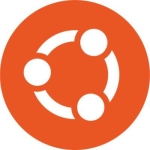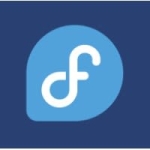What is our primary use case?
We have warehouse management systems (WMSs) where we run Oracle as our database. The app tier is basically Java. We are using a vendor-supplied Java, and the application itself is managed by the vendor. There are just one-offs here and there, such as utility boxes, but the majority is Oracle and the application that connects to Oracle.
On larger systems, like HANA, we have it deployed physically. On everything else, we have deployed it in a VMware environment. It is all on-premises. While there is some cloud, that is being done by contractors.
We are on versions 6 through 8. As soon as version 9 gets released to GA, I am going to start working on getting that image ready. Currently, about half our images are on version 8, two-fifths are on version 6, and then version 7 is squeezed in-between.
What is most valuable?
The solution provides features that help me tweak or configure the operating system for optimal use, such as Insights Client, which I have used quite a bit to help me.
Our users are removed from the environment. They don't really know that they are running on RHEL. There have been very few complaints about speeds, application, or stability on RHEL platforms. Whereas, on Windows platforms, there are a lot of complaints.
Satellite 6.10 and RHEL integrate with each other perfectly. This integrated approach enables me to be a single person managing my images since it does a lot of the manual labor that I used to do, such as building patches, doing system maintenance, and keeping systems consistent. It does all that stuff for me. So, it has offloaded those responsibilities, giving me more work-life balance.
What needs improvement?
It is a bit on the pricier side. However, due to the stability and support that they provide to my management and me, we really don't see a reason to choose another way to go. Red Hat offers excellent support in a sphere where it is difficult to find good support.
For how long have I used the solution?
I have been using RHEL since 2013.
What do I think about the stability of the solution?
It is a good operating system. It is very stable. It does not take a lot of maintenance. You set it up well and it runs. To give some perspective, we also have Windows admins. That team is about six people and growing. They manage twice as many servers as I manage, keeping them busy all the time. Whereas, I pretty much have a life; the work-life balance is very good.
RHEL is very stable. You build an image and deploy it, then it runs.
As far as the operating system contributing to reliability, it is very stable and has low maintenance. It keeps running.
We found that two of our outages in the past eight years were related to the operating system. All our other outages were related to the application and the use of the application.
I don't find the solution’s tracing and monitoring tools impact performance at all.
What do I think about the scalability of the solution?
We can scale out. When we need more machines, we just build more machines. That is not a problem. We don't do the scale ups or any of the other scaling that is out there. That is partially because of the way our applications work. You need to scale according to the application. If the application requires new nodes, we just spin up another node and it is no problem. I could run 10,000 images, and it is not a problem.
Because we buy companies, we will probably continue to increase the usage of RHEL. I don't think that will be a problem because it is so stable. We are running about 200 images right now and about 60% of those are in production. I can't see it shrinking, but I can see it growing.
How are customer service and support?
I like the fact that they really dig into things and then provide answers. As the single Linux guy, I kind of need that second admin next to me sometimes to say, "Hey, what about this?" and I am able to do that through the portal. I get my questions answered and trouble tickets resolved.
The technical support is superior to many vendors with whom we interact. They pay attention. Rarely will I run into a support person who doesn't seem to know what they are doing, then it doesn't take very long to get the issue escalated to somebody else. Out of a hundred cases, I have probably escalated three times. I would rate the support as 10 out of 10.
How would you rate customer service and support?
Which solution did I use previously and why did I switch?
I came from a Unix background. I was on HP-UX on OSS and AIX. So, the transition to Linux was very simple. I am a command line person, so I wasn't scared. I just moved into it and found it to be very attractive. In fact, I don't run GUIs on any of my Linux boxes.
The biggest benefit for me, coming out of the Unix arena, was that it matched Unix very closely. So, I am able to draw on my Unix experience and use that in the RHEL environment. There is almost a non-existent learning curve in my situation.
How was the initial setup?
The initial setup of RHEL is about 10 times easier than Windows. It is literally just click, click, bang. It just installs. If you have a problem with the install, you just reinstall it. It takes very little time to install, about 10 minutes. As a base image, it is very easy to set up. Then, you have post tweaks that you need to do, and I have scripts for that. Since I can script it all, I just run another command, then boom and it is all done.
For my implementation strategy, I build the gold image, which is basically just going through the CD and making my selections for a base image. Then, I freeze that image, which is on VMware, and run my scripts. My scripts basically set up logs for auditing. Whether we are going to ship logs or keep logs locally, it sets up the basic users. For instance, it will set up my account with pseudo access so I can do the remainder of the work using my account with pseudo access. It sets up tracing, the host name, IP addresses, and ESXi host files. It sets up the basic fundamentals of an operating system and gets it ready for deploying the application.
There are also different kinds of file systems that need to be deployed and additional users that need to be added. Those are all manual processes.
What was our ROI?
We have one admin who manages all the images. That is the return on investment. The company hasn't had to hire a second admin (FTE) to keep things running.
What's my experience with pricing, setup cost, and licensing?
We have moved to the Simple Content Access (SCA) model. It is much easier to do renewals and see how I am using my licenses. I used to have to do it all by hand. It would take me a good couple of hours every few months to make sure that we were up to snuff on everything. However, with the new model that they have, this is very easy. I just go to cloud.redhat.com to look and see how I am utilizing my licenses. If I am running out of bounds, I can find out why. If it is simply that we have images that need to be removed, we remove those images. If we need to buy more licenses, then we can start the process of purchasing more licenses.
I think it is worth the price. I wish the pricing was a little bit more friendly, so when I go to my boss, he tells me, "That's too much money." I can say, "It's not too much money."
Especially if you are a newbie, buy the support and use the support. Get a couple of images going and really play around with them: crash them, burn them, and figure out how support functions when you have a really gnarly situation. Otherwise, it is just inserting the CD and booting the machine. It is very easy to set up and run.
Which other solutions did I evaluate?
I have looked at SUSE or Ubuntu. They are so radically different in their total management, e.g., everything from getting packages to configuration and in how that is all done. Therefore, it would be a learning curve to go to another solution. So, there is benefit in staying with RHEL.
I do not have a lot of experience with Ubuntu or SUSE. Those would be the bigger contenders. The thing that I keep coming back to though as I'm talking to vendors and VARs is that though SUSE is a contender out there in the SAP landscape, RHEL has the stability. SUSE appears to function more like a desktop operating system ported to a server environment, whereas RHEL is built from the server hub. The management tools show that. It is a mature management infrastructure.
There are some things that are nice about SUSE. People talk about their app configuration wizards, but if you're coming from a Unix background overall, RHEL feels like a real operating system.
My interaction with Ubuntu has been as a desktop. It is very GUI-oriented. In my estimation, it is more like a toy. It is deployed in server environments, but it is more because admins are familiar with the desktop version of it. They just port that over as opposed to having grown up on Unix and moved into Ubuntu.
A Unix admin will prefer to go into something like Red Hat, Rocky Linux, AlmaLinux, or even Oracle Enterprise Linux because they will simply feel much more like a data center operating system than some of these other solutions.
What other advice do I have?
RHEL provides features that help speed deployment. I am currently learning how to take advantage of those features.
As far as deployment goes, I build a golden image VM and just deploy the images themselves. I don't really use any RHEL tools specifically for the deployment portion.
The solution is constantly expanding and moving into new areas, like jumping into the cloud.
I need more experience with their self-monitoring tools. That is the one area where I feel like I am lacking. I am still using a lot of the stuff that I learned in the Unix realm. I haven't really matured into using the specifics that are being supplied. I am a member of the accelerators team and have been exposed to some of these tools through their lectures. I am starting to play with them a little bit, but I have not fully gone into that arena. So, there is improvement needed on my access to RHEL.
I would rate the solution as 10 out of 10.
Which deployment model are you using for this solution?
On-premises
Disclosure: PeerSpot contacted the reviewer to collect the review and to validate authenticity. The reviewer was referred by the vendor, but the review is not subject to editing or approval by the vendor.

















